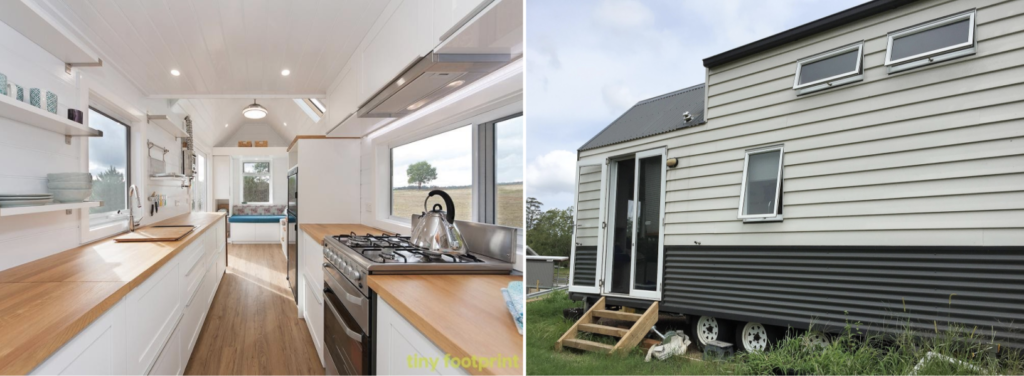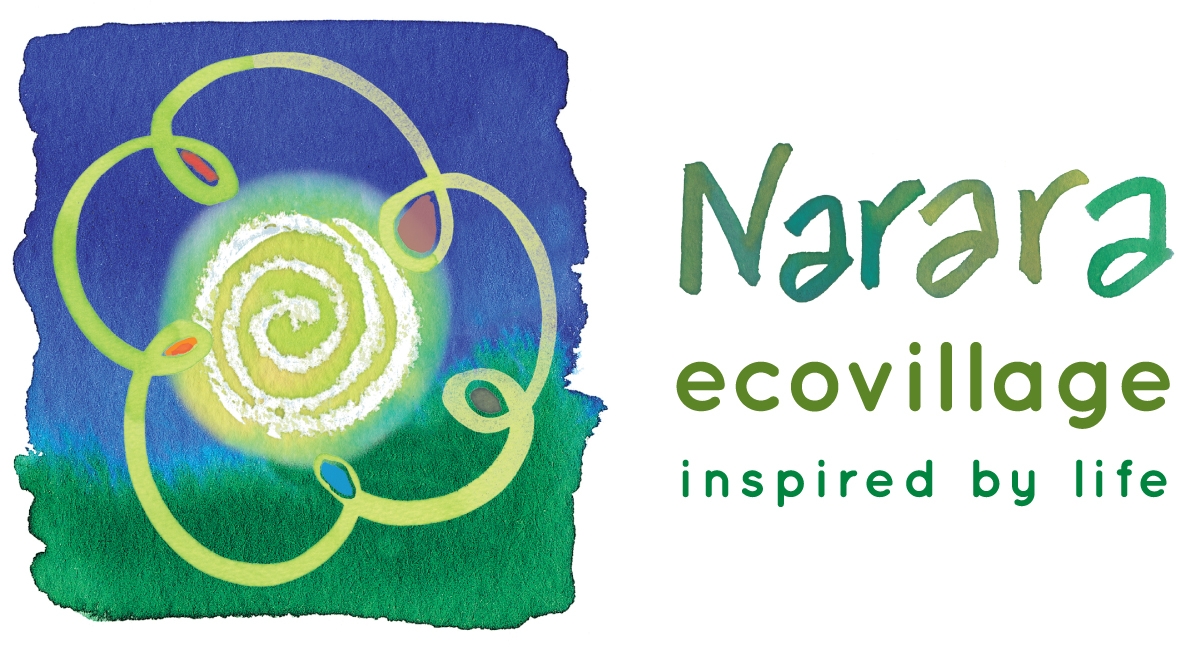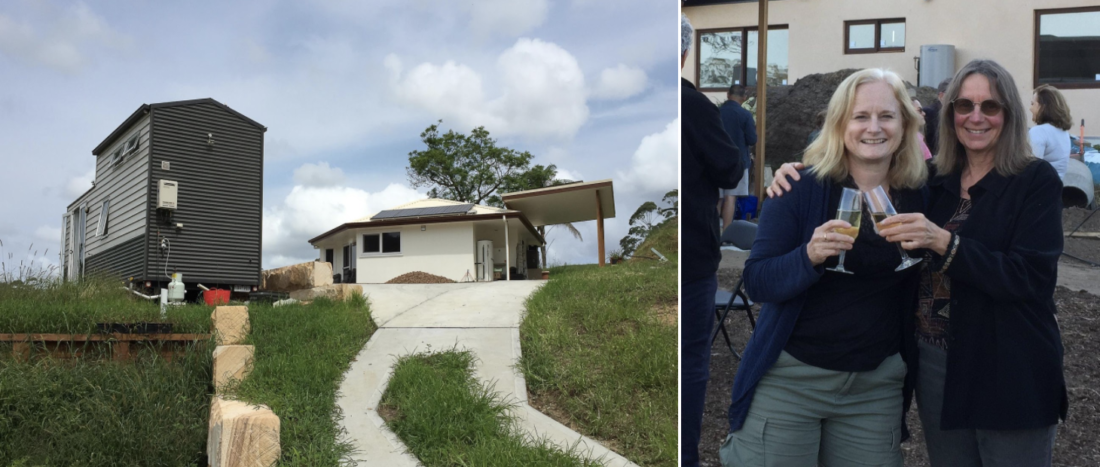How 2 independent ladies found a way to share one housing lot and create affordable living for them both.
Jazz’s Yurt with a Difference
Jazz Mozzi was the original owner and had long planned to build a yurt on the block. The builders specialising in yurts gradually increased their prices until it was out of Jazz’s reach. Living Green Designer Homes, who are now building homes on 7 lots in the village, came up with a very clever design which uses conventional lightweight building techniques and a concrete slab but which carries through some of the more unconventional look and feel of a yurt.
The house is located towards the southern end of the block and has excellent solar alignment to the north. The house is modest in overall size with an internal floor space of only 60sqm. It uses less than 10% of the building block.
The internal layout provides a very generous kitchen/dining sitting area and a single bedroom with built in wardrobe. The bathroom is full size with room for a bath.
Jazz achieved almost super star status when her design achieved the village’s first 9 star NatHERS rating. Best of all Jazz was able to build her dream for less than $220,000.

Chris, Our Very Own Tiny House Expert
Chris runs a business designing and building stylish tiny houses. She initially arranged to locate her tiny house on village community ground partly as a demonstration tiny house. It wasn’t long before Chris and Jazz got chatting and saw an opportunity to share Jazz’s block and locate Chris’s tiny house on the northern end of the block.
Often sharing is a fairly vague concept. Jazz and Chris pretty soon realised that they would need some legal advice and would need to decide on a form of ownership which made both of them comfortable.
Their legal advisors helped them to form a co-agreement and suggested they structure the title as a “joint tenants in common”. This gives both of them legal security and a share in the value of the block. They are also working through arrangements to define what will happen if and when one or the other wants to move on.

We like to think of a tiny house as a housing structure on wheels. It’s generally much more than a caravan. In fact, Chris’s tiny house is a million miles away from a caravan as the picture demonstrates. They usually come with their own bathroom and a composting toilet and a well-equipped kitchen. Generally, they are designed for single person living. Under the Central Coast Council planning guidelines Tiny Houses present a very useful opportunity. Once an initial housing structure has been completed then all owners are entitled to have one tiny house available for occupation on their block. Better yet there is no need for a separate development application.
A few words from the owners – So, what would Chris and Jazz say about their journey to a collaborative living solution?
Jazz responded:
What motivated you to create a shared housing arrangement – financial, sustainability, support and community?
For me it was purely financial. I would not have been able to keep my lot unless I found a collaborative living solution.
What was easier than you expected?
Finding the right person. Being involved in the Village, I found there were some people who I felt “yes, I could make it work with that person.”
What proved to be the most difficult issue to resolve?
Covering off everything in the legal agreement. We are still working through some of the gaps.
What advice would you give to someone thinking about a similar collaborative housing arrangement?
Get to know each other first. Seek legal advice. We worked out all the details before we went to the solicitor. He was able to suggest a standard arrangement, which was then modified to meet our needs.
Chris said:
What motivated you to create a shared housing arrangement – financial, sustainability, support and community?
As I already had my tiny house I was looking for somewhere to place it. Since in NSW that had to be a plot of land with a house already on it and it had to involve ownership of the land to live in it permanently, this scenario was a perfect one to be able to keep living in my tiny house.
What was easier than you expected?
Convincing the Village members that tiny houses were an acceptable concept to have in the Village. Once everyone had a chance to have a sticky beak, they realised that this is of a quality of their own houses. You might not want to live in a tiny house but people could see why I would.
What proved to be the most difficult issue to resolve?
The time it took finding Narara and working out that this was a place I wanted to be. It is not just finding a piece of land, I needed to be sure that this was what I wanted and took about 9 months of visits to get to that point. It was not quick but it was worth taking the time.
What advice would you give to someone thinking about a similar collaborative housing arrangement?
Be honest with yourself about what you are looking for and what your deal breakers are.

